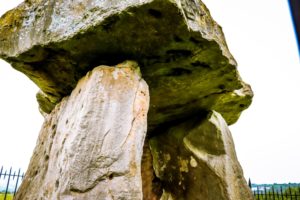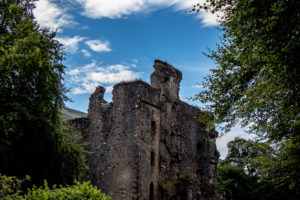 Lancaster Castle is a medieval castle in Lancaster in the English county of Lancashire. Its early history is unclear but may have been founded in the 11th century on the site of a Roman fort overlooking a crossing of the River Lune. In 1164, the Honour of Lancaster, including the castle, came under royal control. In 1322 and 1389 the Scots invaded England, progressing as far as Lancaster and damaging the castle. It was not to see military action again until the English Civil War. The castle was first used as a prison in 1196 although this aspect became more important during the English Civil War.
Lancaster Castle is a medieval castle in Lancaster in the English county of Lancashire. Its early history is unclear but may have been founded in the 11th century on the site of a Roman fort overlooking a crossing of the River Lune. In 1164, the Honour of Lancaster, including the castle, came under royal control. In 1322 and 1389 the Scots invaded England, progressing as far as Lancaster and damaging the castle. It was not to see military action again until the English Civil War. The castle was first used as a prison in 1196 although this aspect became more important during the English Civil War.
Between 60-73 AD, a Roman fort was built at Lancaster on a hill commanding a crossing over the River Lune. Little is known about Lancaster between the end of the Roman occupation of England in the early 5th century and the Norman Conquest in the late 11th century. The layout of the town was influenced by the Roman fort and the associated civilian settlement; the main road through the town was the route that led east from the fort. After the Norman Conquest in the second half of the 11th century, Lancaster was part of the Earldom of Northumbria; it was claimed by the kings of England and Scotland. In 1092, William II established a permanent border with Scotland further to the north by capturing Carlisle. It is generally thought that Lancaster Castle was founded in the 1090s on the site of the Roman fort in a strategic location. The castle is the oldest standing building in Lancaster and one of the most important. The history of the structure is uncertain. This is partly due to its former use as a prison, which has prevented an extensive archaeological investigation.
As there are no contemporary documents recording the foundation of the castle, it is uncertain when and by whom it was started, but it is supposed that Roger de Poitou, the Norman lord in control of the Honour of Lancaster, was responsible. If it was Roger who began construction, the structure would have been built of timber, probably incorporating the earthworks of the Roman fort into its defenses. The form of the original castle is unknown. There is no trace of a motte, so it may have been a ringwork – a circular defended enclosure.
Roger de Poitou fled England in 1102 after participating in a failed rebellion against the new king, Henry I. As a result, the king confiscated the Honour of Lancaster, which included the castle. The Honour changed hands several times. Henry granted it to Stephen of Blois, his nephew and later king. When the Anarchy erupted in 1139 – a civil war between Stephen and Empress Matilda for the English throne – the area was in turmoil. Stephen secured his northern frontier by allowing David I of Scotland to occupy the Honour in 1141. It is possible that David refortified the castle at this time. Due to a lack of investigation, there is little evidence to suggest additions to Lancaster in the mid-12th century. However, the uncertain construction date of the keep means that the King of Scotland could have been responsible for building it. The war came to an end in 1153. It was agreed that after Stephen died, he would be succeeded by Henry Plantagenet (later King Henry II), Matilda’s son. Part of the agreement was that the King of Scotland would relinquish the Honour of Lancaster, which would be held by William, Stephen’s son. After William’s death in 1164, the Honour of Lancaster again came under royal control when Henry II gained possession of the Honour.
On the death of Henry II, the Honour passed to his son, Richard the Lionheart, who gave it to his brother, Prince John, in the hope of securing his loyalty. One of the functions castles served was as a prison;[11] the first record of the castle being used in this way was in 1196, although the role became much more important after the English Civil War. Since the 12th century, the monarch appointed a sheriff to maintain the peace in Lancashire, a role usually filled by the duke and based at the castle. In the late 12th and early 13th century, many timber castles founded during the Norman Conquest were rebuilt in stone. Lancaster was one such castle. Building in stone was expensive and time-consuming. For many castles, the expenditure is unknown. However, work on royal castles was often documented in Pipe Rolls, which began in 1155. The Rolls show that John spent over £630 on digging a ditch outside Lancaster’s south and west walls, and for the construction of “the King’s lodgings”. This probably referred to what is now known as Adrian’s Tower.







